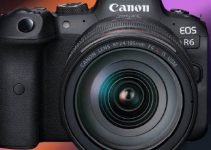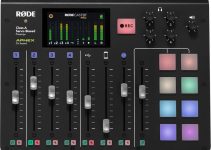The Canon C200 is a fantastic 12-bit Raw recording device that captures absolutely beautiful, classic-Canon colors and offers a lot of flexibility in post. Sometimes where shoots move quickly and you’re changing shots and locations faster than you can keep up with, Raw is in high demand.
The purpose of shooting in Raw is to have more latitude to correct any mistakes that you make in the field, but no matter which camera you’re using, nailing exposure perfectly is the key to getting the best possible image.
Most camera manufacturers include proper exposure information in the manual, but often that involves holding up grey cards, color charts, black balance settings, monitoring IRE values, and so many of the things that some are so eager to overlook when the clock is ticking.
Fortunately, there is a fairly easy and accurate way to get proper exposure using the C200, for which I am teeing you all up to watch the video by Ben Schubert below.
On the Canon C200, when you’re shooting in Cinema Raw Light, Canon’s proprietary Raw codec, you’re gamma settings are automatically locked to C-Log 2.
According to Canon, 18% middle grey in C-Log 2 should land at 42 IRE. If you have the time on set to adjust you’re lighting to match that setting while maintaining an ISO of 400 in RAW, that is exactly where you want to be exposure-wise.
Obviously, you have a little playroom with that number, and exposure settings are both objective and subjective. If an object in the background is going to be washed out, then obviously you’ll need to take things down a notch while trying to keep 18% middle grey at close to 42 IRE as possible.
Keeping an eye on middle grey is easy on the C200 while using the waveform, and the red spot meter. The waveform simply shows you where your total exposure sits on a graph from 0 (black) to 100 (white) and it will always read those values based on your gamma settings; in this case, C-Log 2.
The spot meter displays the exposure values of whatever is in the red box in the center of the frame in red over the histogram. Filming a grey card inside of that red box will quickly show you how close 18% middle grey is to 42 IRE.
You should always set your exposure for 18% middle grey, record a short clip of the grey card, and hold up an X-rite color checker and record a short clip of it. That will make it a breeze for you to perfectly set exposure and color in post, get the best possible image, and match multiple camera angles.
But when things are moving quickly and you don’t have that kind of time, just remember to NEVER TRUST YOUR MONITOR! No matter how good your monitor is, your eyes can’t be trusted when you’re on location.
Your waveform will always be your best friend. There are too many variables that can skew your perception of your footage, such as location brightness, and color temperature. The waveform is a direct representation of what your imager is capturing and it will never lie to you.
Make sure the highs always stay below 100 IRE, and the shadows never reach 0 IRE – once information falls above or below those lines it is lost forever. Every day before you start shooting, black balance the sensor – this aligns all of the pixels to true black.
The black balance of any camera can be off after it sits for a long period of time or with a sudden change in temperature, setting it properly can eliminate low-light noise while shooting in Raw.
By following these basic instructions and taking the time to set your exposure and color properly in the field, you’ll capture the utmost perfect image and save yourself the time and money to not have to “fix it in post”.
[source: Ben Schubert]
B&H Order Link:
- Canon EOS C200 Cinema Camera (B&H)
Disclaimer: As an Amazon Associate partner and participant in B&H and Adorama Affiliate programmes, we earn a small comission from each purchase made through the affiliate links listed above at no additional cost to you.




